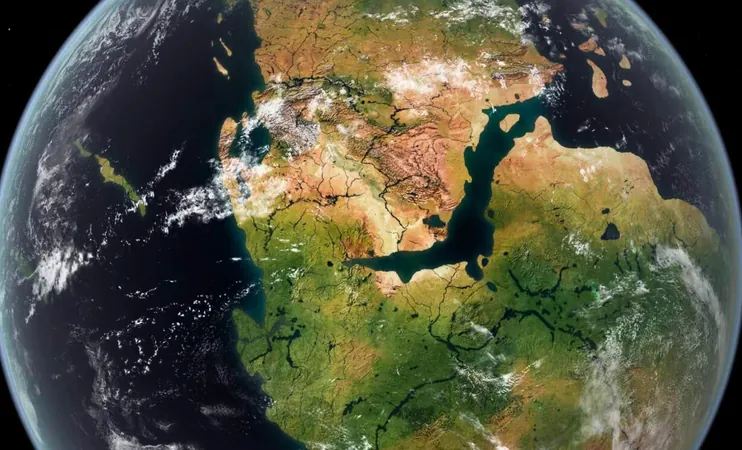
The Shocking Truth: Could There Really Be Only Six Continents on Earth?
2025-05-30
Author: Ying
For generations, schoolchildren have been taught to recite the classic geography lesson: Earth is divided into seven continents, linked by oceans and tectonic boundaries. However, groundbreaking research from the University of Derby is challenging this long-held belief and suggesting that those textbook lessons may need a serious revision.
At the heart of this revolutionary theory is Iceland, a volcanic island typically regarded as a product of a mantle plume separating North America and Eurasia. Dr. Jordan Phethean and his research team argue that Iceland represents not a past breakup of continents, but rather a dynamic process still in motion.
A Rift That Refuses to Break
According to conventional wisdom, the Mid-Atlantic Ridge, slicing through Iceland, formed during the final rift between the North American and Eurasian plates around 52 million years ago. Yet, Phethean’s team contends that the divide is not fully functional; the tectonic plates are still drifting apart, suggesting a geological link rather than clear separation.
Their research shines a light on the Greenland-Iceland-Faroe Ridge (GIFR), which is believed to harbor geological fragments from both tectonic plates. Rather than viewing Iceland as an isolated entity, the study presents it as a geological bridge, a reminder that the continents are still in the process of separating.
Unlocking Hidden Continents
Phethean emphasizes, "Iceland contains remnants of lost continents buried beneath the ocean, alongside vast layers of lava flow." His team coined the term Rifted Oceanic Magmatic Plateau (ROMP) to describe this intriguing formation that blurs the lines between oceanic and continental crust.
A Tectonic Puzzle Across Oceans
To bolster their claims, the researchers drew parallels between Iceland and the Afar region of eastern Africa, another volcanic hotspot situated along a major rift. The two regions share striking similarities in geological makeup and volcanic activity, underscoring that the North Atlantic's story of separation is very much alive.
Phethean recognizes the contentious nature of this theory, remarking, "It’s controversial to suggest the GIFR contains significant continental crust, implying that Europe and North America may not have officially separated yet." Nevertheless, he asserts that their findings are backed by meticulous seismic analyses and tectonic modeling.
Unearthing a Submerged Microcontinent
The study builds on intriguing findings from previous work by Phethean’s team, which unearthed a proto-microcontinent hidden beneath the Davis Strait between Canada and Greenland. Comparable in size to England, this submerged landmass further exemplifies that fragments of continents may still lie beneath the ocean.
Phethean noted, "These ongoing rifting and microcontinent formation events can enhance our understanding of the Earth’s geological future and help us uncover resource-rich regions often overlooked."
Is Our World Map About to Change?
If further tests, including geochemical analyses and advanced tectonic modeling, support their conclusions, we may need to rethink our global maps. The longstanding view of Europe and North America as completely separate continents could soon be upended, revealing a complex and interconnected geological story that’s still unfolding.



 Brasil (PT)
Brasil (PT)
 Canada (EN)
Canada (EN)
 Chile (ES)
Chile (ES)
 Česko (CS)
Česko (CS)
 대한민국 (KO)
대한민국 (KO)
 España (ES)
España (ES)
 France (FR)
France (FR)
 Hong Kong (EN)
Hong Kong (EN)
 Italia (IT)
Italia (IT)
 日本 (JA)
日本 (JA)
 Magyarország (HU)
Magyarország (HU)
 Norge (NO)
Norge (NO)
 Polska (PL)
Polska (PL)
 Schweiz (DE)
Schweiz (DE)
 Singapore (EN)
Singapore (EN)
 Sverige (SV)
Sverige (SV)
 Suomi (FI)
Suomi (FI)
 Türkiye (TR)
Türkiye (TR)
 الإمارات العربية المتحدة (AR)
الإمارات العربية المتحدة (AR)